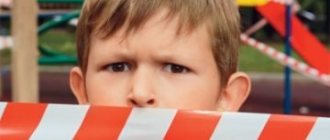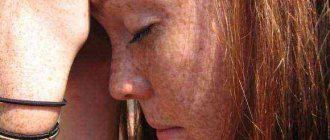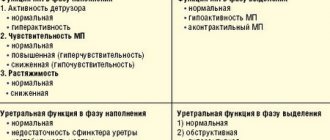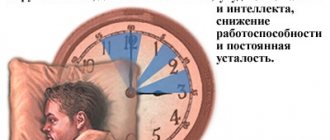Types of stuttering in children
In childhood, 2 types of pathology can appear:
- neurotic stuttering (logoneurosis);
- neurosis-like stuttering in children.
Causes and treatment, diagnosis and prevention - all this is dealt with in both cases by a speech therapist. In the first option, stuttering often occurs as a result of mild residual effects of brain damage. It can appear after a mental trauma that occurred unexpectedly (fright, sudden change of place of residence, separation from parents) or that lasted for a long time (violations of the rules of raising a child, constant quarrels in the family). Logoneurosis is often combined with violent movements. It appears inconsistently. It is usually accompanied by other neurotic disorders (phobias, enuresis, sleep disorders, irritability). Neurosis-like stuttering takes some time to develop. Usually it is a consequence of organic damage to the central nervous system and is in no way related to mental trauma. This disorder is characterized by convulsive speech, often accompanied by tic-like violent contractions of various parts of the body. With neurosis-like stuttering, speech impairment always manifests itself. Such children, as a rule, do not experience fear during performances or communication.
According to the nature of the course, the disorder is divided into 3 types:
- wavy - stuttering, which can intensify or weaken at different periods of life, but never completely disappears;
- recurrent - stuttering, which alternates with speech well-being;
- constant - stuttering with a relatively constant course.
Causes of stuttering
The main cause of stuttering is excessively high activity in certain centers of the brain.
The exact reasons are unknown even today. Doctors identify only risk groups for the development of stuttering. These include children who are prone to seizures, have increased anxiety, etc. The functioning of the speech apparatus is negatively affected by the frequent presence of a child during intrafamily conflicts and the difficult psychological situation in the family. The baby's environment also directly affects his speech abilities. If parents or close relatives have this disorder, it is highly likely that logoneurosis may develop in the child. Stuttering is more often detected in children who, since childhood, have been studying more than 2 languages, the development of which their parents are especially zealous. Violations also occur in those children who spend a lot of time at the computer or TV. The provoking factor is almost always fear.
Factors that provoke stuttering in children
Stuttering in children is caused by 2 factors.
- Genetic predisposition to various brain diseases. It is present in children whose relatives suffer from diseases of the central nervous system, including if the child’s parents stuttered in childhood, and the pathology does not disappear over time. Stuttering is quite common among children who had disorders of brain development in the embryonic period. Predisposing factors to the development of the disease are infection of the fetus and injuries received during childbirth or pregnancy, prematurity, and constant oxygen deprivation of the fetus. The tendency to stutter is influenced by the child’s temperament, as well as his ability to adapt to environmental conditions. Children who quickly adapt to various changes are less susceptible to illness. Choleric people are more prone to stuttering, especially at times when they quarrel or argue.
- External influence. These include:
- damage to the central nervous system by various infections (inflammation of the brain or its membrane);
- traumatic brain injuries;
- brain damage caused by trophic diseases (impaired glucose tolerance);
- immaturity of the brain. Both hemispheres of the brain are most actively formed at 5 years of age. Until this time, speech should develop gradually, without jerks. In boys, the formation of the central nervous system begins later than in girls. For this reason, they are more likely to have speech defects. Up to 5 years of age, a child may experience iteration, which is characterized by the repetition of words and syllables. This condition is a variant of the norm and disappears on its own without treatment;
- the presence of foci of infection in the respiratory system and ear canal;
- diseases that negatively affect the body’s protective properties (frequent colds, the presence of parasites in the intestines, metabolic disorders);
- associated conditions (urinary incontinence, sleep disorders, fatigue, phobias);
- psychological trauma (fear, prolonged stress);
- violations of the rules of raising a child (spoiling, fulfilling all the child’s whims);
- improper speech development (speech is too fast and unintelligible).
In some cases, stuttering is not a disease, but an attempt to become like an adult. If one parent stutters, the child may copy him. In this case, pathology can form in 2 ways: the child either stutters involuntarily while communicating with his parents (he talks normally with other people) or in an imitative form (with this form he stutters when talking to any person).
Helping a child who stutters
1. The very first and most important thing parents should do is contact specialists who deal with stuttering problems. If you see the first signs of stuttering, then you need to contact speech therapists, psychiatrists, neurologists and psychologists in clinics. They will give the necessary recommendations, if necessary, they will prescribe medication and tell you what to do at first;
It is better to first contact a neurologist: get treatment, take a course and then, based on this, start classes with a speech therapist. The pediatrician’s task is to cure concomitant pathologies, strengthen the body, and prevent colds, in particular diseases of the ear and vocal cords. It is also important to cure chronic diseases and bring them into stable, long-term remission. Physiotherapeutic procedures are also important in treatment. These will be classes in the pool, massage, electrosleep.
The psychotherapist shows the child how to overcome his illness, helps him feel comfortable regardless of the situation, helps him overcome fear in communicating with people, makes it clear that he is full-fledged and no different from other children. Classes are carried out together with parents who help the child overcome the disease.
It is worth remembering that the sooner you take action, the better. The longer you have stuttered, the harder it is to get rid of it. You should try to overcome stuttering before enrolling your child in school, and to do this you need to contact a speech therapist as early as possible and follow all his instructions, since the training program includes speaking in public when answering questions from the teacher, which can be a big problem for your child.
The fight against stuttering will become more difficult with age due to the consolidation of incorrect speech skills and related disorders.
2. Switch to a slower pace of speech for the whole family. Usually the child easily picks up this pace and after 2 - 3 weeks begins to mirror it. It's good to play silent. You need to come up with any fairy tale story, explaining to the child why this needs to be done. It is unacceptable to talk to a child in short phrases and sentences.
It is strictly forbidden to correct or scold a child when he stutters, mistaking it for pampering. You should not discuss this problem in front of your child.
3. Limitation of communication. The child should not attend educational or preschool institutions, but should stay at home for 2 months. You also need to stop all visits to guests.
4. Start drinking a sedative. For example, “Bay-bye.”
5. Analyze the situation in the family. It is necessary to pay attention to when a child begins to stutter, at what time of day, and to note all provoking factors. This is necessary so that when you go to a specialist, you already have an observation diary.
6. Calm the child: remove the TV, loud music, emotional stress, additional activities. It is useful to turn on calm audio stories for your child. It is unacceptable to quarrel in the family in front of a child. It is important to avoid overtiredness and overstimulation of the child. Do not force your child to say difficult words over and over again. Make comments less often and praise your child more often.
7. Games to prevent stuttering. They create proper breathing by inhaling deeply and exhaling slowly. First of all, play calm games with your child. For example, draw, sculpt, design together. It is very useful to engage a child in leisurely reading aloud and measured declarations of poetry. Such activities will help him correct his speech. Learn poems with short lines and clear rhythm. Marching, clapping to music, dancing, and singing help a lot. Singing difficult moments and whispering helps to get rid of convulsive moments.
Examples of exercises for developing proper breathing: inhaling deeply through the nose and exhaling slowly through the mouth:
- "Glassblowers". For this you will need regular soap bubbles. The baby’s task is to inflate them as much as possible;
- "Who is faster". For this you will need cotton balls. The baby’s task is to be the first to blow the ball off the table;
- For school-age children, a game with inflating balloons is suitable. It is useful to teach a child to play simple wind instruments (whistles, pipes);
- and while swimming, play “Regatta”. Move light toys by blowing;
- "Fountain". The game is that the child takes a straw and blows through it into the water.
If the children are older, then you can use Strelnikova’s breathing exercises. It is based on a short inhalation through the nose;
- "Home sandbox" First, you need to allow the child to play with sand silently. And at the final stages, ask to tell what the child built.
8. It is very useful to give him a relaxing massage when putting your child to bed. It is carried out by the mother, who sits at the head of the child’s bed. Soft massaging movements are performed that relax the articulation organs and the upper shoulder girdle.
9. Dubbing speech with the fingers of the leading hand. The speech and centers responsible for the leading hand have almost the same representation in the cerebral cortex. When the hand moves, the signal runs to the brain. That part of the cerebral cortex becomes excited and, since the speech centers are located here, the hand begins, as if in tow, to pull speech along with it. That is, we make a hand movement for each syllable. Young children can make movements with two fingers.
10. Speech therapy lessons. At speech therapy lessons, exercises are selected that relieve tension and make speech smooth and rhythmic. The child should repeat the exercises at home, achieving clarity of speech.
Lessons have a certain system, stages, and sequence. First, children learn the correct narrative presentation of the text. They read poetry and retell homework. The peculiarity of this story is that the child feels comfortable, he understands that he will not be graded and will not be ridiculed. During such exercises, children’s speech becomes measured and calm, and their intonation does not change. When achieving the absence of stuttering in a narrative story, the child introduces emotional coloring into speech: somewhere he will raise his voice, somewhere he will make an accent, and somewhere there will be a theatrical pause.
During the classes, various everyday situations in which the child finds himself are simulated. This teaches him to deal with stuttering outside the speech therapist's office.
Be sure to maintain a good emotional mood in your child. The child should be given a reward for his success. Even if it is just praise, the child should feel the importance of his achievements. The presence of examples of correct speech is mandatory in class. An example could be the speech of a speech therapist or other children who have already undergone treatment. Speech therapy rhythm is an important point in the treatment of stuttering. These are exercises for vocal and facial muscles, outdoor games, singing, and round dances.
Be sure to give your child homework so that treatment is not limited only to the speech therapist’s office.
You should not raise your voice at your child, this only makes stuttering worse.
Modern speech therapy methods help the child quickly overcome the disease and lead a full life.
11. Breathing exercises are one of the generally accepted methods of treatment. They develop the muscles of the speech apparatus and vocal cords, teach deep, free and rhythmic breathing. They also have a beneficial effect on the respiratory system as a whole and relax the child.
12. Computer programs are an effective method of treating stuttering. They synchronize the speech and hearing centers in the brain. The child is at home, sitting at the computer and speaking words into the microphone. There is a slight delay thanks to the program, which allows the child to hear his own speech, and he adapts to it. And, as a result, speech becomes smoother. The program allows the child to speak in circumstances with emotional overtones (joy, anger, etc.) and gives advice on how to overcome these factors and improve speech.
13. There is also a method of hypnosis for children over 11 years old. This method allows you to get rid of spasm of speech muscles and fear of speaking in public. Speech after 3-4 procedures becomes smooth and confident.
14. The method of acupressure belongs to alternative medicine. The specialist influences points on the face, back, legs, and chest. Thanks to this method, speech regulation by the nervous system improves. It is better to do massage regularly.
15. Treatment with medications is an auxiliary method of treating stuttering. This treatment is carried out by a neurologist. Anticonvulsant therapy and sedatives are used. Thanks to treatment, the functions of the nerve centers are improved. Sedatives also help well in treating stuttering: decoction and infusion of herbs (motherwort, valerian root, lemon balm). It is not possible to eliminate stuttering using medications alone.
16. General strengthening methods , such as a daily routine, proper nutrition, hardening procedures, and the elimination of stressful situations are also beneficial in the fight against stuttering. Long sleep (9 hours or more) is also important. For deep sleep, you can take a warm shower in the evening or take a bath with relaxing additives (for example, pine needles).
The child should eat fortified foods, including more dairy and plant products. It is necessary to limit the child’s consumption of meat and spicy foods, and remove strong tea and chocolate.
Comparison of neurotic and neurosis-like forms of stuttering in children
Neurotic stuttering in children occurs as a result of mental trauma, so the disease occurs almost suddenly. With such stuttering, parents can accurately say when and why the child developed the pathology. Such stuttering usually appears at the age of 2-6 years, when there is already developed phrasal speech.
In such children, speech activity decreases due to the fact that they are afraid to talk. They fixate on complex sounds. In this case, respiratory and vocal spasms may be observed. They have a sound pronunciation disorder, but at the same time they develop normally in the lexical and grammatical sphere. During a conversation, these children's nose wings widen. In this form, stuttering is wave-like in nature, that is, speech deteriorates significantly during times of stress.
Neurosis-like stuttering develops gradually as a result of damage to the central nervous system. Such stuttering is not associated with any events, so parents often cannot find the cause of the disorder. Neurosis-like stuttering begins to appear at 3-4 years of age, at the time of the formation of phrasal speech.
Children suffering from this form of stuttering are sociable and active, and are not afraid of their disorder. Stuttering in this case occurs due to articulatory spasms. Such children speak monotonously, quickly and inexpressively. With neurosis-like stuttering, there are also disturbances in the lexico-grammatical aspect of speech. Gross motor skills are often impaired, so children may be overly stiff or clumsy. Their facial expressions are weak and their handwriting is illegible. Children suffering from neurosis-like stuttering often have learning problems. This type of stuttering has a stable course; exacerbations can occur infrequently - mainly due to overwork and heavy speech loads. When conducting neurological studies, lesions of the central nervous system are detected, and when conducting an EEG - high convulsive readiness.
Signs of stuttering in children
It is important to detect stuttering in children in the initial stages. As a rule, the disease begins with frequent repetitions of words. During this period, the child experiences hypertonicity of the muscles of the face and neck. He does not want to talk, and if he does speak, his voice volume fluctuates.
Symptoms of stuttering can vary greatly depending on what clinical form of the disease is present in the child.
So, in the neurotic form, speech pathology occurs suddenly. It usually occurs between 2 and 6 years of age as a result of psychological trauma. At first, the baby is constantly silent, and when he begins to pronounce words again, he pronounces them with a stutter. Such a child may experience sleep disorders, he gets irritated by little things, and by the age of 11 he withdraws into himself, as he realizes his defect.
The first symptoms of a neurosis-like form of stuttering appear at 3-4 years of age. The child always stutters and over time begins to use meaningless words and sounds (“well”, “uh”). Such children are hyperactive, but get tired quickly, they often have headaches, and memory loss.
Sometimes, along with stuttering in children, involuntary muscle contractions in different parts of the body may occur during a conversation. These reflex movements appear as if to improve pronunciation, but, in fact, on the contrary - they only complicate the situation and create the impression of uncertainty.
Symptom of stuttering
Stuttering first appears at the age of 2-4 years. You should suspect speech disorders if:
- the child takes a long time to say a phrase;
- the baby pronounces words hesitantly, pausing between them;
- the child often stops when saying a sentence;
- repeats individual words or sounds, often at the beginning of a word.
As a rule, the first signs appear soon after a stressful situation.
Under the influence of the people around him, the child tries to speak correctly, but uncontrolled spasms do not allow him to do this. As the psycho-emotional state normalizes, the defect weakens and may disappear completely. After repeated exposure to the provoking factor, the disorder appears again. Over time, periods of exacerbation of stuttering become longer and longer, and periods of remission become shorter. In adolescence, logophobia manifests itself more and more, the child avoids situations in which he has to speak. He develops psychological complexes. The problem gets worse because in any uncomfortable situation the teenager is exposed to stress, and the symptom becomes more pronounced.
Diagnosis of stuttering in children
If you notice the first symptoms of stuttering, your child should immediately be seen by a doctor. If this pathology is suspected, examinations should be carried out by specialists such as a neurologist, pediatrician, speech therapist and psychiatrist. In some cases, consultation with a child psychologist may be necessary. A major role in making a diagnosis and identifying the causes of the disease is played by the child’s medical history, information about how development occurs, information about when, how and under what circumstances he began to stutter.
In order to identify the stage of the disease and the causes of stuttering in children, a speech diagnosis will be required, which includes assessing the rate of speech, voice and breathing. During the study, the doctor will identify speech and motor disorders, if any, and determine what type of articulatory seizures the patient suffers from and with what frequency they occur.
To detect CNS pathologies you may need:
- examination of cerebral vessels using rheographic method;
- EEG;
- MRI.
Eliminating stuttering in children
Treatment of stuttering in children is carried out by a speech therapist. If pathologies have caused cramps in the muscles of the articulatory apparatus or diseases of the nervous system, you may need the help of a neurologist. If stuttering occurs after a traumatic situation, you may need to work with a psychologist.
The essence of treatment for this pathology is to restore the functions of the speech circle, including inhibition of Broca's center. In the correction of stuttering, drug therapy, hypnosis, acupuncture, various relaxing procedures, and special exercises are used. In some cases, it may be necessary to use anti-stuttering devices and special computer programs.
Drug treatment for stuttering includes taking anticonvulsants, anti-anxiety, sedatives and various homeopathic medications. In some cases, neurometabolic stimulants may be used. However, this method of treatment can only be used for children over 3 years of age.
Thanks to hypnosis, the doctor will be able to identify the true causes of the disorder. Improvement in condition can be achieved even after 1 procedure. For residual elimination of pathology, 10-15 sessions may be required. In this way, stuttering in adolescents is eliminated. The method is not used to treat young children.
Stuttering can be treated with acupressure. Thanks to it, speech regulation is significantly improved. During the massage, the doctor uses a relaxing method of influence. During the session, the specialist presses on special points and performs circular movements.
Breathing exercises have shown good results in the treatment of stuttering. The essence of the method is to normalize breathing and lengthen inhalation. Thanks to this, the child can learn to stock up on air before saying anything. This method of treatment is used for children over 4 years of age.
In addition, logorhythmics can be used to correct pathology. The essence of this method is to use the connection of a word with melody and movements. Thanks to logorhythmics, a child will be able to correct speech defects, reveal their talents and improve self-esteem. The method is used to treat children under 7 years of age and older.
To eliminate stuttering, your doctor may recommend the use of anti-stuttering devices. Some devices help the child hear the spoken line with a slight blurring, others drown out the voice with noise, and others reproduce a corrected version of speech. The most effective devices are those that lower or raise the volume of the voice.
Treatment for stuttering
Doctors work to treat stuttering comprehensively. Several techniques are used at once to increase the patient’s chances of a full recovery. To eliminate the symptom, the following may be prescribed:
- group, individual, family sessions with a psychologist;
- classes with a speech therapist;
- drug therapy;
- hypnotherapy;
- acupuncture;
- physiotherapy.
It is important not only to recognize the causes of stuttering, but also to teach the child to independently cope with provocative situations, develop self-confidence, and work with fears and beliefs. Despite the high effectiveness of treatment methods, doctors cannot guarantee recovery. In some cases, therapy only improves the situation, but does not lead to complete recovery. The problem of stuttering cannot be ignored by expecting the child to “outgrow it.” You need to enlist the support of professionals and actively work with the baby. Then he will be able to enjoy a full life and free communication. Doctors are ready to come to your aid, even in the most difficult situation!
Forecast and prevention of stuttering in children
Without an examination, it is difficult to determine the prognosis of the disease. This is due to the fact that various factors can lead to stuttering, but not all of them, unfortunately, can be easily eliminated. The prognosis of stuttering largely depends on the form of the disease and the age of the patient. Typically, children who are treated for stuttering at an early age find it easier to get rid of the pathology. In children with congenital pathologies of the speech apparatus, the prognosis is not so favorable. The prognosis also depends on the type of stuttering. Thus, respiratory spasms are easier to cure than tonic ones. The best effect in treatment can be achieved at 3-5 years of age. Already at 12-17 years of age, the disorder is difficult to correct. There are cases when, due to a psychological factor, a child experiences a relapse of the disease.
To avoid stuttering, you need to realize that healthy children grow up with non-conflict parents. Do not tell scary stories to your child at night and do not let him watch scary cartoons, do not scare him and do not leave him alone in dark rooms. Love your baby and communicate more with him, do not be too strict and demanding, protect him from mental trauma. Calm children who have enough parental love and care almost never encounter this disease.











